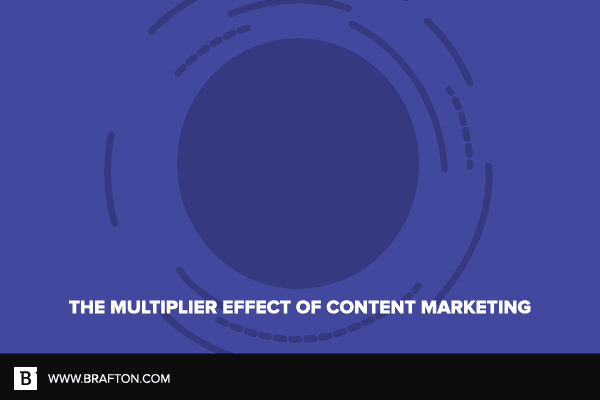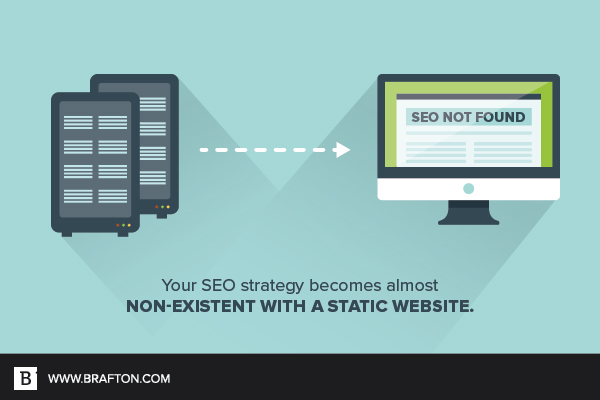Back in the early days of the internet and search engines, looking up a business online was mainly done to find phone numbers, addresses and other contact information. And that’s how static websites were born.
Today, when we refer to a static website, we are talking less about the technical nature of a site, and more to the fact that there are a number of “fixed” pages the site is using to draw traffic. Which is to say, the web property has a fixed number of pages and is not utilizing content marketing.
The problem with this strategy is that static websites have crippled their search exposure, limiting themselves to a fixed number of search queries that will generate their site as a result.
Why is this?
Every page has a set of queries that will make that page show up in search results. You want to maximize the frequency at which your site shows up in search results for a wide variety of keywords. This is impossible if you have limited your site to a handful of keyword sets generated by a couple pages.

The point of content marketing and SEO is to expand the number and variety of search queries that will return your site in search results. With a static site, you have a finite number of search queries – because it’s the same information with little or no change – that will return your site as a result.
Why you want to increase your search presence
You know why you aim to improve your search presence – you want more people coming to your site, converting to leads and becoming customers. But you are not going to get there with a static site. You need a strong content marketing strategy to reach your commercial goals.

Let’s take a look at the hard data and how having a dynamic website made for content marketing gets your brand in front of the right audience at the right time.
- Businesses that develop a solid content marketing strategy and site see 7.8 times more unique traffic than those that don’t frequently create quality content.
- Companies that have a content marketing website and SEO strategy receive 6 times more conversions than organizations that don’t.
- Seventy-three percent of marketers stated that they believe a strong SEO strategy brings in “excellent or good” ROI.
- Leads brought in by SEO have a 14.6 percent close rate compared to the 1.7 percent close rate by leads brought in by outbound marketing.
Besides the numbers, don’t forget about the less tangible benefits of having an effective SEO strategy and website. You want visitors to interact with your site and brand, so having an online presence that provides a personalized and engaging experience helps build relationships with potential customers, as well as establishes trust and loyalty.

How a static website stunts your growth
If you’re still relying on a static site to bring in visitors, then do the thing you should have done a while ago: Stop.
Each HTML file – or page – on a static website requires extensive web development in order to change anything. This means content on static pages cannot be personalized or optimized for the individual visitor.
Additionally, when it comes to SEO, static websites won’t bring you any wins. Sure, your site might rank for a few keywords, but if your site is fixed to only a limited number of pages, you’ll only get impressions for that small amount and nothing else. When you don’t regularly update and add new content to your site, your SEO strategy will quickly become stagnant.

Having a dynamic site made for content marketing and implementing an effective SEO strategy are the most successful ways to ensure you meet your marketing goals. You need a site that can be updated with quality content and provide an interactive experience for prospects.
Your website should be an extension – and even act a “salesperson” – of your company. You wouldn’t want your Sales department repeating the same boring information over and over to potential customers, so why should you treat your website the same way?





